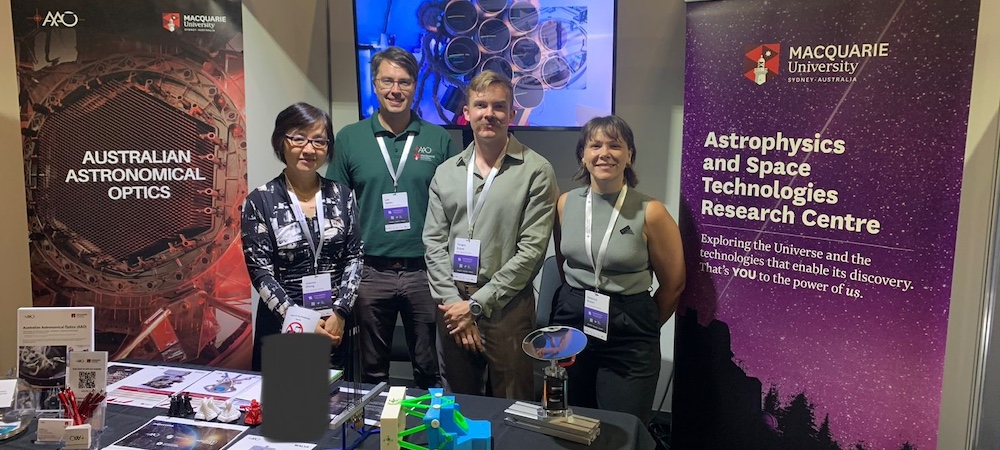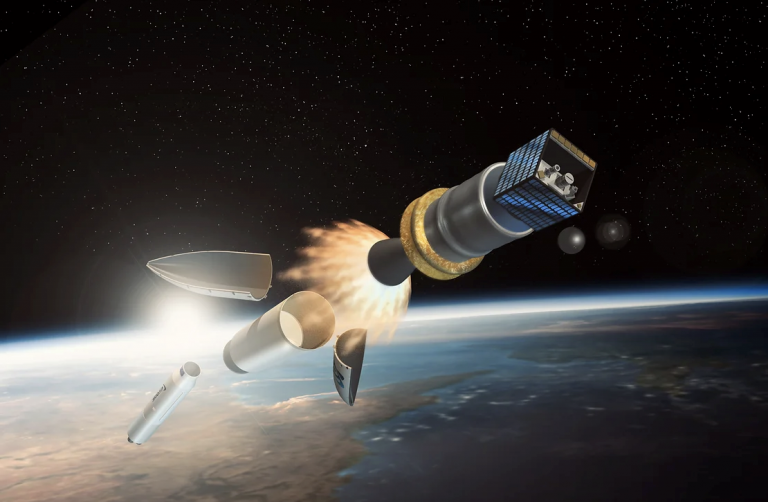Space is the Final Frontier for Macquarie University’s Australian Astronomical Optics (AAO), as the researchers take their specialist skills from ground-based telescopes, to new heights in the Space Industry.
Macquarie University’s Australian Astronomical Optics (AAO) was an exhibitor at the 16th Australian Space Forum in Sydney this month, showcasing their unique capabilities to Australia’s rapidly expanding space industry.
"We now support space missions related to Earth Observation, Space Domain Awareness and lunar-lander sensor technology," says AAO Space Projects Lead, Associate Professor Lee Spitler.

L to R: Jessica Zheng, Lee Spitler, Yevgen Kripak and Rebecca Brown at the AAO's exhibit at 16th Australian Space Forum, Dec 2023
For nearly half a century, AAO has honed its expertise in ground-based precision instrumentation for telescopes, he says.
“In recent years these specialised capabilities have been in demand in many non-astronomy applications, in particular within Australia’s growing space industry.”
Macquarie University’s new Astrophysics and Space Technologies Research Centre, hosted by the Faculty of Science and Engineering, also brings together data-intensive research capabilities to support collaborative research and discovery in the sector.
AAO’s expanded technological scope to address space applications has led to a range of significant projects and strategic partnerships, including with Brisbane-based company Gilmour Space Technologies, and with Sydney-based AI robotics and navigation technology company Advanced Navigation.
AAO developed the Malya satellite-based thermal camera, scheduled to go into orbit next year in a satellite bus being built by Gilmour.
 “The Malya thermal camera payload uses camera technology not specifically designed for space,” says Associate Professor Spitler.
“The Malya thermal camera payload uses camera technology not specifically designed for space,” says Associate Professor Spitler.
"By uplifting a camera for use in space, we have been able to produce a working system much faster than normal. Traditionally space-grade cameras take years to produce, while our system will be available after less than one year of effort.”
The camera’s many potential applications include water quality monitoring, bushfire detection and weather monitoring.
AAO has also designed custom optical components – an optical multi-beam laser collimator – to form a key part of Advanced Navigation’s moon sensor called LUNA (Laser Measurement Unit for Navigational Aid).
The sensor will be hosted on a lunar landing system being developed by US-based space systems company, Intuitive Machines, which has three NASA-backed lunar missions in preparation under the Commercial Lunar Payload Services program in the US.
The AAO technology will be part of a lunar mission scheduled for launch in 2025.
“At the Australian Space Forum earlier this month, it was very apparent that Australia is nurturing a strong space technology community,” says Associate Professor Spitler.
“Universities and other research organisations either spin out their own commercial enterprise, or support industry, who are embracing the principles of the ‘NewSpace’ era,” he says.
“In a time of rapid space technology growth and innovation globally, Australia is on a trajectory to make a big impact.”
Australia’s local space industry is projected to grow to $12 billion by 2030, supporting an estimated 30,000 jobs, and has strong government support, with over $2 billion invested into the civil space sector over the past decade.
“There are continuing opportunities for AAO to contribute to this industry as we build on our expertise in ground-based telescopes to design space-based technology,” says Associate Professor Spitler.